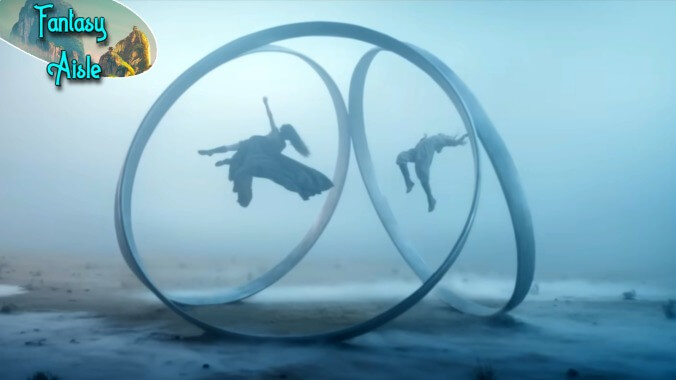Can the TV Adaptation of ‘The Wheel of Time’ Really Be Considered Adaptation At All?
Boosting the women characters certainly makes the story more enjoyable. But diminishing the male main character—the spoke around which the entire wheel of the series turns—is a mistake.
Screenshot: Amazon EntertainmentTV
This is Fantasy Aisle, a monthly column from Jackie Jennings about everything related to horny dragon books.
“The third season of Amazon’s adaptation of The Wheel of Time has just ended,” is a sentence I never thought I’d write. The best-selling, high fantasy series written by Robert Jordan and Brandon Sanderson was once, like so many fantasy epics, deemed unadaptable for the screen. In fact, back in 2015, FX did kind of try to adapt it and, by almost all accounts, failed. The current Wheel of Time series is a far better attempt, one that tries—and largely succeeds—to smooth out the book’s questionable handling of sex, gender, and women. But, in attempting to make a more feminist version of the series, showrunner Rafe Judkins and his team have so drastically altered the source material that the resulting show is often unrecognizable as The Wheel of Time. For all the necessary feminist changes, I’m not sure it can be called an adaptation at all.
Let me be clear: I am really enjoying the series. Like so many fans, I’ve been thirsty for an adaptation since I turned the last pages of A Memory of Light. And lots of the changes that the creators have made, specifically around female characters, were extremely necessary. But the project of the series seems to be to make The Wheel of Time a story where the female characters aren’t just as interesting but are also as key to the story as the men. However, book fans know that The Wheel of Time is, at its core, about one man: Rand al’Thor.
If you’ve never read the books and are just watching the show sans context, that’s probably a surprise. And to be fair, no one would blame you for skipping the 14-book series (plus prequels!)—each book is a honker unto itself. The story is set in a fantasy world that is on the edge of armageddon, which is referred to as the Last Battle or Tarmon Gai’don (which, yes, does sound a lot like the word “armageddon”). The Last Battle is prophesied to be an epic showdown between the forces of good and evil, the Dark One and the Dragon Reborn, who is a lowly shepherd named Rand al’Thor.
-

-

-

-

-

-

-

-

-

-

-

-

-

-

-

-

-

-

-

-

-

-

-

-

-

-

-

-

-

-

-

-

-

-

-

-

-

-

-

-








































